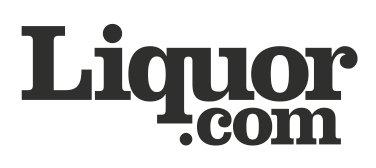ROCKS STARS – KIT CODIK

LIQUOR LIBERATED
Liquor.com Founder Introduces Millions of Readers to Better Drinking
By Francine Cohen

It’s a good thing that in his 1922 poem The Wasteland TS Eliot referred to April as the cruelest month; because if he had written “November is the cruelest month” he would have confounded the next generation’s sociologists as they look back into culinary history to pinpoint the moments when Americans suddenly became food and drink obsessed and embraced terms like “foodie” and “cocktailian.”
Why confusing to call November cruel? Because if one tracks factoids about the hospitality industry’s history and progress then they know that November is a monumental month worth heralding. It’s in this month that the two media launches which entirely changed the face of how modern day Americans find pleasure in food and drink, and how they interact with chefs, farmers, purveyors and bartenders, happened; in November 1993 we saw the first Food Network broadcast (then called Television Food Network) and November 2009 marks the date the month that Liquor.com launched, opening up a whole new world for spirits aficionados.
In our book, there’s nothing cruel about any of that. In fact, it’s quite the opposite. There’s great reason to celebrate the immediate embrace of Liquor.com’s content and the site’s rapid growth to over 100,000 email subscribers since launch (not to mention hundreds of thousands of Facebook fans and strong partnerships with other media outlets such as Huffington Post that drives the number up to touching 1-3 million consumers per month); it all has proven to be a boon for the entire hospitality industry. And, though the food revolution has been going on for a while, it took the introduction of a spirited website to drive that passion for good drinks and quality alcohol to the forefront.
Funny that the website which makes better spirit knowledge accessible all started over a late night beer. But then again, great ideas often do. Liquor.com founder Kit Codik explains how he arrived on the scene and unknowingly changed the face of drinks appreciation, “I went to Tales (www.talesofthecocktail.com>) two years ago before I started Liquor.com – I didn’t know anyone. All I was there to do was to learn the industry. I met Noah [Rothbaum – current Editor of Liquor.com] there and we had an Abita (www.abita.com) in a plastic cup at Absinthe House from 5-6.”
At the time that Codik and Rothbaum were bonding over Abita Liquor.com didn’t yet exist. This past year Liquor.com was the festival’s largest media sponsor, but back then, over that beer, Codik was in New Orleans strictly on a research mission to see what was percolating in the spirits industry and determine how he could tap into it in a way that opened up the marketplace to consumers in a consolidated and compelling way they’d never seen before while exposing brands to potential new consumers.
The serial (and successful) entrepreneur came to the cocktail festival with a name in mind for his website and realized he needed to do more research into the booze business. Codik admits that his approach to building Liquor.com is not the traditional way to get a business off the ground. But it seems to be working just fine. He comments, “In 2008 I was scratching my head and wondering why when it is an industry generating $60 billion at retail and $20 billion at wholesale, the brands’ digital advertising spends were only 1 to 3% of their marketing budgets versus the 10 to 12% that other categories were already spending on digital marketing.”
He continues, “You don’t normally do this, but I actually built this backwards with a name. Usually you start with a market problem or opportunity and that seeds the project. Instead we started with a name and determined whether there was an opportunity to build the tremendous brand without a capital outlay. It was a tough time to raise capital, but I had been in the start-up world for a long time and had enough people in my network and it went from there. My business partner and I met the guy who owned the domain name. He pitched us to work with him on a different business plan and, while we loved the name and loved the guy, we didn’t love the plan. So we went our separate ways. He called us again later and ended up saying he’d take $4.5 million for the domain name. Candy.com had just sold for $3 million and Toys.com had just sold $5 million. We knew the domain is valuable and it’s a huge industry so we said to him ‘you give us the domain and you’ll get a seat on the board, and equity, and we’ll set a finite timeline to research the industry.’”
This arrangement worked. And, despite Codik’s admitting he was more of a wine drinker than a spirits guy prior to the launch of Liquor.com and had no real knowledge of the industry at the time he undertook this venture, Codik took to it quickly and intensely. He says, “It’s funny how things come together. I’m so passionate about building the business and, while I think about Liquor.com as a digital business, fundamentally we’re in the spirits industry. It permeates everything we do and I’m very passionate about it. I feel like I found my home.”
His home was centered on a vision that he explains as this, “Let’s build an email centric business that has a highly targeted audience.” Codik envisioned a site that was both approachable and authoritative. To that end he created a “dream team” board of industry advisors as well as a stable of seasoned writers. His goal? As he explains, “I think it’s our responsibility to be writing about the newest, latest, and most interesting things. Nothing delights me more than hearing that someone read an article and goes into a bar and asks ‘do you have that Cachaça stuff?’ Those are the types of things that would make me happy. I do know that given our audience and size it has to be happening somewhere. I’m happy to get the average consumer talking about and asking about categories that might be intimidating.”
To minimize that intimidation factor every communiqué from Liquor.com speaks with authority. He continues, “It’s a brand we’re building and a voice that becomes trusted. It is why we’ve invested time and energy and money to build the local experiential side to bring the editorial to life. I think we’re pulling in a newbie audience and educating them and hopefully they stick around. We started with Beam and hopefully we’re opening people’s eyes. For example, the typical consumer doesn’t know anything about certain spirits; we [in the industry] know what Pisco and Cachaça are, but those aren’t categories our readers know [yet].
With an end goal of introducing consumers to new spirits and spirit categories that they then seek out and ultimately buy for their home bar, Liquor.com has undergone a small transformation in its short life. Consumer education via Liquor.com is now happening via local events as well as regular editorial content provided by some of the industry’s most prominent figures. Codik notes, “We’re providing a whole set of tools to consumers and then drive them to get that bottle of XYZ on their home bars.”
To be able to do that in a genuine way means keeping a finger on the pulse of their readers. He remarks, “If we’re not doing great things for consumers we won’t have an audience. The three tier system creates a very interesting opportunities for us. There’s low hanging fruit everywhere. We can execute at the highest end of the spectrum and work with suppliers, vendors, venues, and bartenders in a way that delights consumers. At the end of the day that’s what matters. We’re thinking about this holistically and as a platform that has a tangible local component. Facebook wasn’t part of the original plan but with 200,000 Facebook fans it’s become an important part of our business and where we’re engaging our business.”
Continuing that engagement and growing readership can be a tricky thing in a world where so much is constantly flooding the inbox. Being flexible and amenable to shifting gears has continued to make Liquor.com worth reading. Codik advises, “You can read this in books and hear it as advice; it’s very rare you start with a business plan and end with that plan. Good entrepreneurship understands where you need to morph your model. You keep tweaking to what people are responding to. We constantly ask ‘how do we delight and engage the audience with the things they want and remain interested in so we can monetize well and fund the growth of the company?’”
The growth continues because the model doesn’t remain stagnant. Codik remarks, “I look at what is working and what doesn’t work. It’s very clear that the attention span of consumers digitally is not huge because you’re hit with so much information from so many directions. My personal belief is that shorter is better. To create really long articles wouldn’t resonate with consumers; the sweet spot seems to be 250-300 words as that’s been successful for Thrillist and elsewhere. We want to keep someone engaged and interested, and we try and provide enough in the email, not overwhelm them with 5,000 words. We’re hoping to get content consumption in the email itself.” Codik also takes frequency into account when considering how editorial and advertising content resonates. He says, “Frequent emails translate to more dollars and more engagement with your audience which is half the battle.”
Battling to get their attention is a challenge that Codik and his team are up for as they continue on their mission of bringing better drinks to the bar. Along with the frequent emails and experiences like spirit tastings with distillers and skilled bartenders guiding the evening, Liquor.com has plenty of plans for future growth. Finding a way to touch his audience which is a pretty even split between men and women with an age group focus of 25-45, the bulk of which hovers 34 year old range of more educated, more affluent readers, is exciting. Codik notes, “We’re building a well respected premium brand that’s fueled by leaders in the cocktail world. Our goal is to get to a point where we’re touching 10-30 million unique people on Liquor.com and other media platforms like food sites, lifestyle sites, and blogs. Video is going to be important to us. We launched video a couple of weeks ago. Want to do a lot of premium video content that’s interesting, editorially driven, and possibly episodic. That’s a perfect example of something I wish we could have started a year ago but didn’t have the bandwidth.
We’re probably going to do more local content, collaborative content and do more locally. We just launched Chicago. For mobile, we’ve got some initiatives underway we’re excited about and then there’s more ecommerce. I’ve got a model in my head of how I think we can drive more sales of alcoholic beverages without becoming the seller.”
So, instead of selling alcohol, Liquor.com will remain in the business of selling consumers on better alcohol consumption. Codik comments, “Things that we keep at a very approachable price point to bring consumers in – $45 for a tequila tastings – it’s a great way of really educating consumers in a tangible fashion. I know we could charge more for the things we’re doing. We don’t look at the thing we do locally as a core pillar. I look at it as a wonderful compliment that augments what we’re able to do to engage with consumers. And work more constructively with our partners. If we can bring that to life and bring liquid to lips, the macro vision for the business will be to more effectively drive consumers in to buy at retail.”
With that philosophy at the forefront of his business model it is no wonder that brands have started reaching out to Codik to assist with their brand marketing. Codik is pleased to have brands coming to him, sometimes as repeat partners. He comments, “The brands are getting savvier digitally. They understand the power of digital. And it’s so measurable too.” Being able to measure success explains why Codik has seen his phones light up. He proudly shares, “Now brands are calling us and we are getting inbound advertising requests almost every day. They’ll say, ‘We set aside X$ to do something with Liquor.com’ and while it is far from people throwing money at us it’s great to be considered in part of the consumer media plan they are hoping to put together.”
With Liquor.com in place as both a media player and an industry platform the spirits industry is benefitting greatly by allowing the site to be a champion for quality production and consumption. Codik concludes, “’My hope is to create greater awareness in the industry of how we can serve the cocktail and spirits industry, community, and consumer. I feel like it’s our responsibility to continue to propel interest in premium cocktails and premium spirits and get consumers comfortable in trying them. And build that trust so that they know we’re steering them in the right direction.’”
***While regular ROCKS STARS columnist David Ransom patiently awaits background materials from his next subject (ahem, Mr. New Bar Owner, you know who you are) Editor in Chief Francine Cohen penned this column.

1 Comment
You must be logged in to post a comment.

Great article. Taking one of the oldest industries and bringing its brand marketing into the digital age.